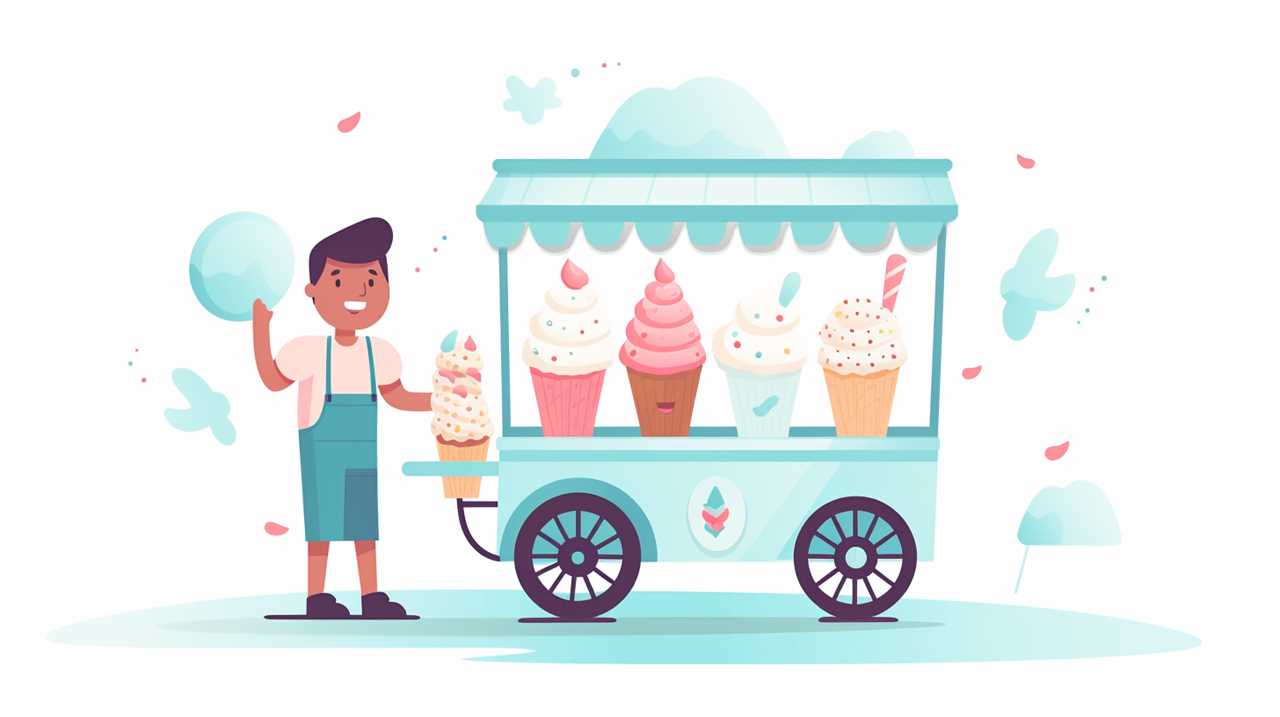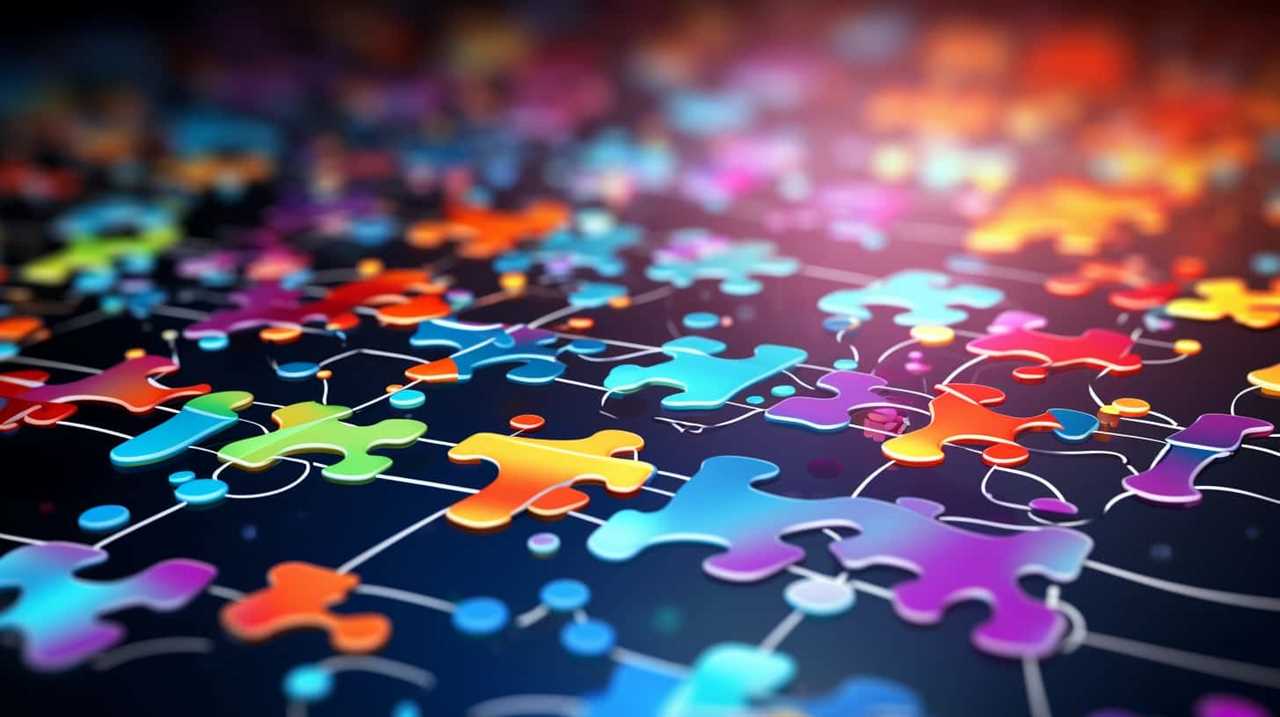Have you ever questioned if the ice cream in your freezer is still okay to eat? It’s a frequent worry. Yet, there’s no cause for alarm, because we’re going to delve into the topic of expired ice cream and point out the definitive signs that it has gone bad.
Keep an eye out for changes in texture, a not-so-pleasant odor, ice crystals forming, or even the dreaded mold growth. Don’t let a bad batch ruin your sweet indulgence – let us show you the way!
Key Takeaways
- The expiration date is an important indicator of the shelf life of ice cream and should be followed to ensure quality and safety.
- Changes in texture, such as ice crystals, gritty or sandy texture, separation into layers, or a watery consistency, can indicate that ice cream has gone bad.
- A rancid smell in ice cream suggests bacterial growth and should not be ignored, as consuming it can lead to unpleasant taste and potential foodborne illnesses.
- Proper storage, including tightly sealing the container, storing in the coldest part of the freezer, and avoiding exposure to air and strong-smelling foods, can help prevent mold growth and maintain the freshness of ice cream.
Expiration Date
We always check the expiration date on our ice cream containers before enjoying it. The expiration date is a crucial indicator of the shelf life of the ice cream. It represents the date until which the ice cream is expected to maintain its quality and safety when stored under proper conditions.
The shelf life of ice cream can vary depending on the ingredients used and the storage conditions. It’s important to note that the expiration date is determined based on specific storage conditions recommended by the manufacturer. Factors such as temperature and exposure to light can significantly affect the quality and safety of the ice cream.

Therefore, it’s essential to store the ice cream in accordance with the recommended storage conditions to ensure its freshness and prevent any potential risks.
Texture Changes
To determine if ice cream has gone bad, we can examine any texture changes that may have occurred. Texture is an important indicator of ice cream quality, as it can reveal potential flavor degradation and melting consistency issues. Here are some texture changes to look out for:
- Ice crystals: If you notice large ice crystals forming on the surface of the ice cream, it may have been improperly stored or is past its prime.
- Graininess: A gritty or sandy texture can indicate that the ice cream has begun to deteriorate.
- Separation: If the ice cream appears to be separating into layers or has a watery consistency, it’s likely no longer good to consume.
- Airiness: Excessive air incorporated into the ice cream can result in a lighter, less dense texture, suggesting possible quality issues.
- Freezer burn: Ice cream that has freezer burn will have a dry, tough texture and a distinct off-flavor.
Examining texture changes can give us valuable insights into the condition of the ice cream, but it’s also important to consider other sensory cues, such as off-putting odor, which we’ll discuss in the next section.
Off-putting Odor
When assessing the condition of ice cream, it’s important to consider any off-putting odor present. A rancid smell is a clear indication that the ice cream has gone bad. This smell is often described as sour or foul, and it’s caused by the breakdown of fats in the ice cream.

The presence of this odor suggests that the ice cream has been exposed to air or has been stored improperly, leading to the growth of bacteria. It’s crucial to note that even if the ice cream still looks and feels fine, a rancid smell shouldn’t be ignored.
Consuming ice cream with a rancid smell can result in an unpleasant taste and potential foodborne illnesses. Therefore, if you detect a rancid smell, it’s best to discard the ice cream to ensure your safety and enjoyment.
Ice Crystals
After assessing the off-putting odor of the ice cream, another important aspect to consider is the presence of ice crystals. Ice crystals can indicate that the ice cream has been improperly stored or is past its prime. Here are some key points to keep in mind regarding ice crystals:
- Ice crystals form when ice cream is exposed to fluctuating temperatures or repeatedly thawed and refrozen.
- The melting point of ice cream should be around -5°C to -7°C (23°F to 19°F). If the melting point is higher, it can lead to the formation of ice crystals.
- Ice crystals can result in a gritty texture and affect the overall taste and quality of the ice cream.
- Freezer burn, which is caused by exposure to air, can also lead to the formation of ice crystals.
- To prevent the formation of ice crystals, it’s essential to store ice cream in a tightly sealed container in the coldest part of the freezer.
Mold Growth
We need to be aware of the potential for mold growth in ice cream. Mold can develop on ice cream if it is not stored properly or if it has expired. To prevent mold growth, it is important to follow some storage tips. Firstly, always check the expiration date before purchasing ice cream. Secondly, keep the ice cream container tightly sealed to prevent air and moisture from entering. Finally, store the ice cream in the coldest part of the freezer, ideally at a temperature below 0°F (-18°C). Additionally, avoid placing the ice cream near strong-smelling foods as it can absorb their odors. By following these mold prevention and storage tips, we can ensure that our ice cream stays fresh and delicious for longer.

| Mold Prevention Tips | Storage Tips |
|---|---|
| Check expiration date | Keep container tightly sealed |
| Store in coldest part of freezer | Avoid placing near strong-smelling foods |
Frequently Asked Questions
Can I Still Eat Ice Cream if It Has Passed Its Expiration Date?
Yes, we can still eat ice cream that has passed its expiration date. However, it is important to check for signs of spoilage. If it has not been frozen before, can I freeze expired ice cream?
How Can I Prevent Ice Cream From Developing a Grainy Texture?
Preventing grainy texture in ice cream is crucial for a smooth, satisfying treat. To avoid this, store ice cream in an airtight container to prevent freezer burn and maintain optimal texture.
What Are Some Common Off-Putting Odors That Indicate Ice Cream Has Gone Bad?
Off putting odors are common spoilage signs in ice cream. We’ll share how to identify these smells to prevent consuming bad ice cream. Trust us, we’ve got your back on this one!
Why Does Ice Cream Sometimes Develop Ice Crystals?
Ice cream sometimes develops ice crystals due to causes of freezer burn. To prevent this, we should properly store ice cream by sealing it tightly in an airtight container and placing it at the back of the freezer.

What Should I Do if I Find Mold Growth on My Ice Cream?
If we find mold growth on our ice cream, we should immediately remove it and discard the affected portion. To prevent mold growth, it’s crucial to store ice cream in airtight containers and monitor its expiration date.
Conclusion
In conclusion, determining whether ice cream has gone bad is crucial for ensuring food safety. By keeping an eye out for textural changes, off-putting odors, the presence of ice crystals, and mold growth, we can effectively assess the quality of our frozen treat.
Remember, like a detective examining clues, we must be vigilant and use our senses to detect any signs of spoilage.
Stay informed, be precise, and savor your ice cream with confidence.









